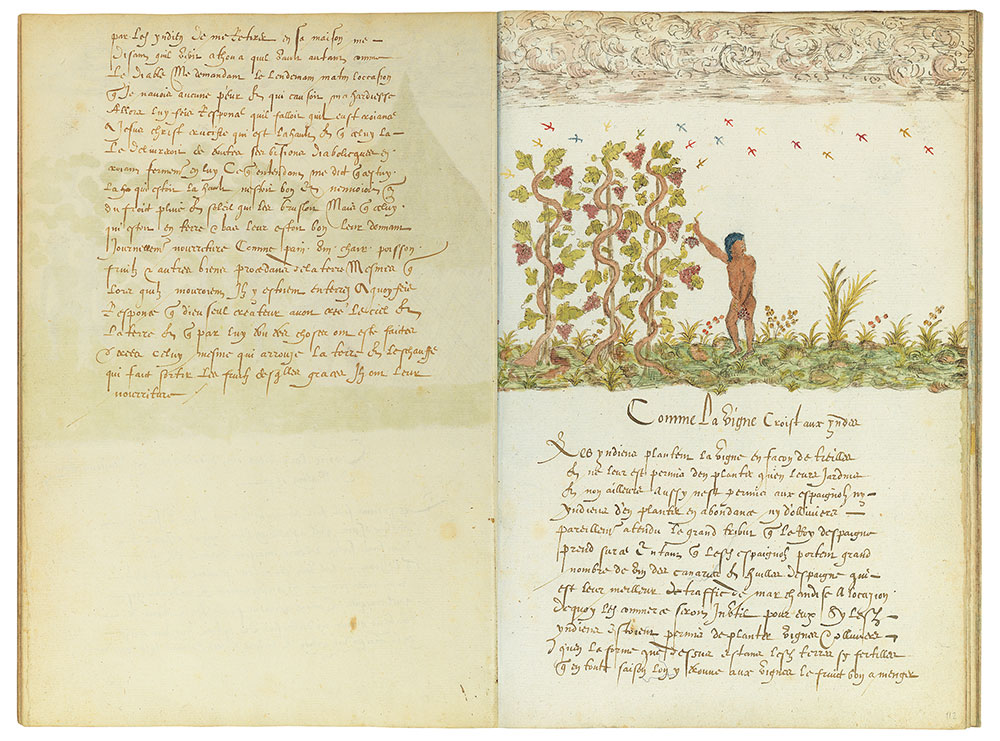Folios 111v–112r

Histoire Naturelle des Indes
Illustrated manuscript
Bequest of Clara S. Peck, 1983
In 1983, The Morgan Library & Museum received, as the bequest of Clara S. Peck, an extraordinary volume whose beautiful paintings and descriptions document the plant, animal, and human life of the Caribbean late in the sixteenth century. Spaniards had already begun to exert influence over the indigenous people of the area when explorers from England and France arrived, among them Sir Francis Drake. The volume, known as the Drake Manuscript and titled Histoire Naturelle des Indes when it was bound in the eighteenth century, gives us a wonderful picture of daily life at the time of Drake's many visits to the region. Although Drake's connection to the manuscript is uncertain, he is mentioned on more than one occasion by the authors. Drake himself is known to have painted, but none of his work survives.
Contents: 199 images of West Indian plants, animals and human life, with accompanying manuscript captions written in late sixteenth-century French.
Medium: Most of the illustrations consist of a black chalk underdrawing and a combination of pen and brown ink with watercolor; on some images selected areas have also been glazed with a gum.
Binding: Bound or rebound in brown leather in the late 18th century.
Pagination: Penciled folio numbers (1–125) in lower right corner of each page were added by The Morgan Library & Museum. Folios 92v–93, 93v–94, and 95v–96 are fold-out leaves.
Continued from fol. 111
to go back into the house, saying that he sees—Athoua equal to the Devil. Asking me the next morning the reason for my fearlessness and boldness, I answered him that he must believe in the crucified Jesus Christ up above who would deliver him of all his diabolical visions if he firmly believes in him. Hearing this, he told me that the one up high was not good; he only sent cold, rain, and scorching heat while the one down on earth was good to them, giving them their daily food like bread, wine, meat, fish, fruits and other goods from the soil itself and that when they die they are buried there. Whereupon I answered that God alone is the creator who created heaven and earth and warms it and makes the fruits come out thanks to which they have their nourishment.
Comme La Vigne Croist Aux Yndes (How the Vineyard Grows in the Indes)
The Indians plant vineyards in the form of a vine-arbor. They are only permitted to plant them in their gardens and not elsewhere. Besides neither the Spaniards nor the Indians are permitted to plant them in abundance and, in like manner, olive trees on account of the high tribute which the King of Spain is collecting from it. Inasmuch as the Spaniards bring in a great quantity of wine from the Canary Islands and oil from Spain which is their best trading merchandise. Trade, therefore, would be without profit to them if the Indians were permitted to plant vineyards and olive trees except in the form seen above, the earth being so fertile that in every season one finds good-tasting fruit in the vineyards.